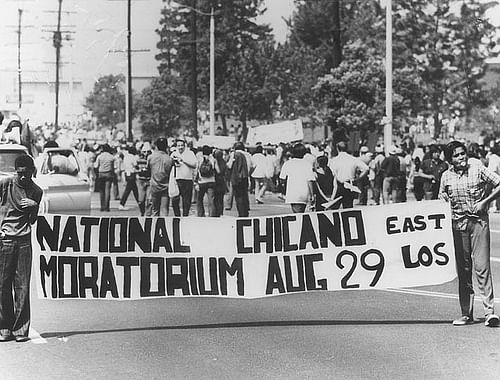

In 1970, Los Angeles was a sort of modern utopia-in-progress. At the same time—and for the first time, really—Mexican Americans were becoming an economic, cultural and political force. East Los Angeles became the center of the Chicano Movement, Whittier Boulevard its bustling “Main Street.” — COMMON \ EDGE
Los Angeles urban planner, artist, community activist, and educator, James Rojas pens a brief history of "Latino Urbanism" tracing through his own life, the community, and the physical space of East Los Angeles. Mr. Rojas coined the word Latino Urbanism and a strong advocate of its meaning, using community gatherings and discussions via his artfully created wood blocks as buildings enabling non architects create imaginary city blocks, civic centers and neighborhoods under his story telling guidance..
"In the late 1960’s, Frank Villalobos, Raul Escobedo, David Angelo, and Manual Orozco, a team of young architects, urban planners, and landscape designers, formed a community design center called Barrio Planners. This politically active group focused their practice on building a Chicano utopia, designing El Mercado as a community event space based on the design of a market in Guadalajara, Mexico. El Mercado was financed through a community collective and was originally designed as a two-story building with basement parking. The building had a large patio in the middle that used natural light to flood the Mexican food stalls and the second floor restaurants and shops. El Mercado, or El Mercadito as it is referred to today, remains one of the most popular tourist draws in East L.A."
No Comments
Block this user
Are you sure you want to block this user and hide all related comments throughout the site?
Archinect
This is your first comment on Archinect. Your comment will be visible once approved.